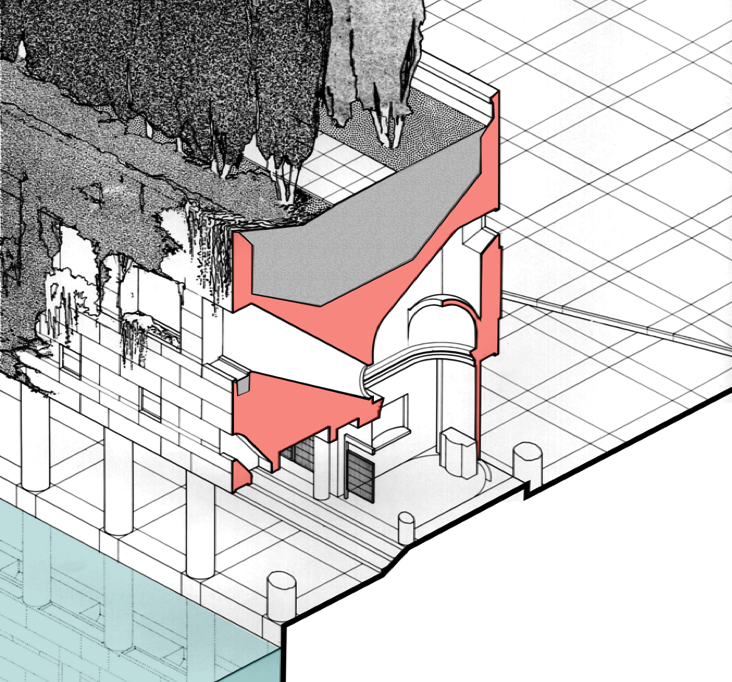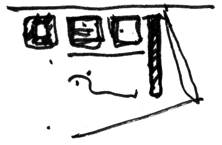1
Prinz-Albrecht-Palais
Wilhelmstrasse, Friedrichstadt, Berlin, Germany
It is noteworthy that the Competition brief starts by discussing the tree-topped wall with a Janus effect—one side cold and unfriendly, the other green and full of life. This fascinating detail highlights how spatially rich the deep wall was meant to be.
The palace and grounds of the Prinz-Albrecht-Palais, as well as adjacent buildings along Wilhelmstrasse, became the headquarters of the SS and the Gestapo during WWII. It was at this palace that millions were sentenced to death and political prisoners tortured and executed on site. The building was severely damaged during the war and by 1955 all remains of palace and grounds had been removed, leaving a vast desolate parcel of land that defied rebuilding, due to its horrific past.
In 1982, the City of Berlin, organized a design competition to determine how best to memorialize the site and its events. Since there were no new buildings required, the progam was intentionally vague, other than to stipulate that the developed grounds had a double purpose of being a new park for the adjacent Friedrichstadt neighborhood—a solemn memorial and a cheery park, all in one.
In the Competition brief that follows, Seligmann described how to reconcile the two by utilizing a tree-topped wall, the faces of which have "different characters" and "different meanings."
Competition brief
This scheme achieves its architectural presence through the interaction of a specific local situation and a desire to produce a lasting, notable, memorial place. The area around the site is essentially flat. Trees alone are not sufficient to achieve a spatial solution. Building mass of sufficient height and presence is required. Thus the introduction of the tree-topped wall, large enough to be seen from most directions and identify the site. The wall is a response to the spatial and visual facts of the site. It is also true for the inclusion of the tree platforms. With the wall, one is afforded a large number of interpretations: a counter to the Berlin wall, a reference to the ‘wailing wall’ in Jerusalem and the notion of ‘this side and that side.’
Continues on page ??

1983

Seligmann's parti sketch depicting the two structures mimicking the Gropius Bau, and the deep wall to the right.